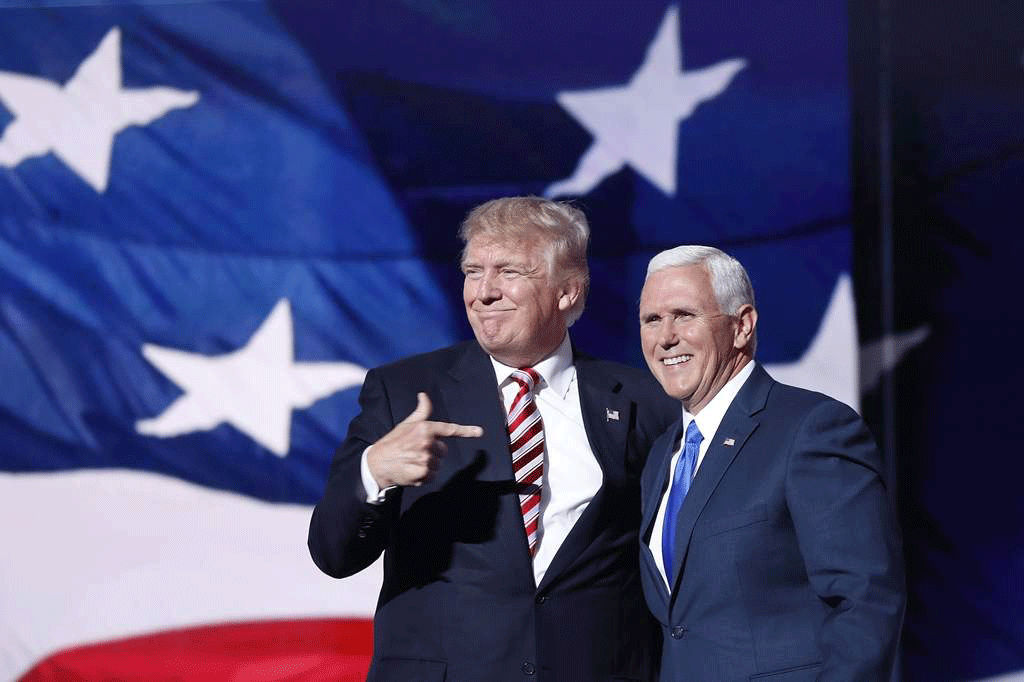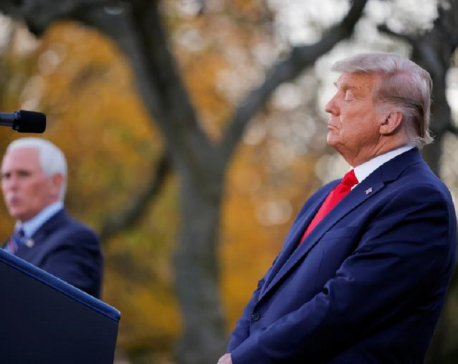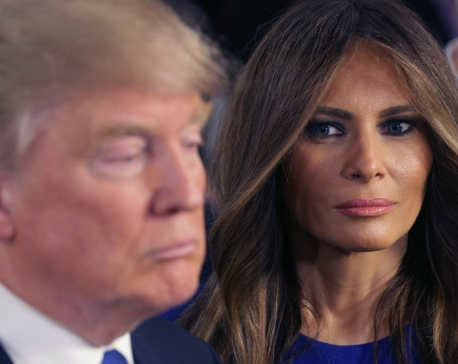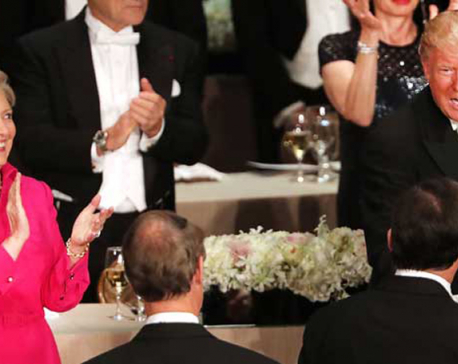
OR

Much of white working class America sees the non-white immigrant population as the “other” and feels threatened by it
There is an interesting theory in social psychology. This theory called moral licensing argues that when individuals perform a morally good deed, they feel so good about themselves that they immediately go ahead and perform an immoral action. We see this in our everyday life. The best father at home is the worst, most corrupt bureaucrat at work. You exercise today, and, therefore, don’t feel guilty when you indulge in unhealthy snacking immediately afterwards. This phenomenon also helps explain the Trump win in the American election.
It wasn’t long ago that blacks and women in the US could not vote. The Voting Rights Act of 1965 granted voting rights to all colored Americans. Women got that right in 1920 through the Nineteenth Amendment to the US Constitution. However, after almost a century now, it is still unfathomable to a large proportion of the American population—including female voters—that a woman could be president. The final results show that 66 percent of female voters voted for Trump. A hatred of Hillary Clinton does not explain that huge proportion. It is especially astounding when considering the fact that Trump has a recorded history of objectifying women, misogyny, sexist remarks, video and audio leaks showing degrading remarks about women, and no fewer than twelve women who came forward with accusations of sexual assaults.
Moral licensing—the good feeling that came through electing the first black president—allowed people to openly engage in sexist rhetoric and slander against Clinton. Moral licensing allowed them to vote for a sexist narcissistic demagogue. Of course, moral licensing is not the only reason for the Trump victory. There are a few others.
First, as in all other Western economies, United States is experiencing racial and demographic conflict. Much of white working class America increasingly sees the non-white immigrant population as the “other” and is threatened by it. As a result, the white power movement has gained steam in recent years. Some of that has manifested in the Black Lives Matter versus the Blue Lives Matter confrontation (Blue being the color of American Police uniform). White Supremacist language is now tolerated, although not quite encouraged.
Trump’s rhetoric of a “deportation force” to round up all illegal Mexicans, and his plan of barring Muslims from entering the US were actually popular with the white working class voters. While more than 50 percent of both Democrats and Republicans expressed being afraid of the other side, there is already evidence that the Trump rhetoric has encouraged violence. The Los Angeles County—which has a large Mexican immigrant population—has seen a 24 percent increase in hate crimes after Trump was nominated. Now that Trump is the president, the real danger is whether those who agree with the rhetoric feel emboldened to further carry out their hate-filled fantasies against the non-white population.
Second, there is no denying that the American political process does have a healthy dose of corruption, just like in every other country. Wikileaks released emails showing that the Democratic National Committee—which is supposed to be neutral and help carry out the process of choosing the Democratic Party’s nominee for president—was engaging in foul play to bring down the candidacy of Bernie Sanders. It was found to be covertly supporting the nomination of Clinton.
The DNC succeeded in its mission, but the truth came out and alienated the young voters. A post-mortem analysis should show that these young voters refused to vote for Clinton. Instead, a significant proportion of these young people voted for Gary Johnson, the third party candidate. It did not matter that Johnson’s knowledge of domestic and foreign policy is as good as a fifth grader’s. Hillary was considered “unlikable” by 55 percent of voters and “untrustworthy” by 67 percent. The bottom line was that Clinton’s campaign engaged in corrupt practices and had to pay the price.
Finally, profit through globalization has not been shared equally throughout the world, and that has given rise to nativism. CEOs of large companies make multimillion dollar salaries and bonuses while workers experience stagnant wages and benefits. The phrase “rich become richer and poor become poorer” has never been truer in history than in today’s current time. Countries that promoted and lobbied for globalization and trade are now seeing their people rail against those ideas. Failing manufacturing industries, where the majority of the white working class was employed, has left America. The white working class voted Trump with hopes that he would bring those jobs back.
Paragon of liberal democracies, such as Sweden and the Netherlands, have already seen a rise in far-right anti-immigrant, anti-trade political parties. Working class citizens in the Western economies have come to the realization that “globalization” is no longer benefitting them. The result is that walls have come up against the ideas of globalization and globalism. Brexit and the far-right movements gaining steam in France and Germany mean the European experiment of free trade and open borders is now coming to an end.
Already, there are actual walls being erected in European borders. Hungary started building a fence in its border with Serbia in June, 2015, and with Romania in September 2015. In August 2015, Bulgaria completed the construction of its border wall with Turkey. In September 2015, Slovakia started building a temporary border with Hungary. In November 2015, Austria started building a border fence with Slovenia, Slovenia built a fence with Croatia, and Macedonia built a fence with Greece. Trump ran on a promise to build a border wall to keep the Mexicans out. This growing anti-immigrant, anti-trade feeling in Western economies these days is a strong rebuke to the decades-long globalization phenomenon, which now needs a revision.
After all is said and done, the US election results show that it is the rural white America that has brought Trump into power. This America does not share the views of urban diverse America on what America truly is. Trump mentioned this America in his victory speech as the “forgotten people.” This is the same phrase used by American politicians after the 1960s—after Black Americans got the right to vote—to describe the white working class voters who were no longer the targeted voters for political campaigns. Now that Trump has won, these supposedly forgotten people expect America to be “great again” for them.
Twitter: @khanal_m
You May Like This

Trump faces calls for removal, possible impeachment after Capitol chaos
WASHINGTON, Jan 8: President Donald Trump faced the threat on Thursday of a second impeachment, a day after his supporters... Read More...

Melania Trump preparing to divorce Donald Trump?
Trump continues to "enjoy' historic unpopularity, both at home and abroad. And by at home, we don't just mean in... Read More...

Trump gets booed as he and Clinton trade biting jokes
WASHINGTON, Oct 21: TINaking a break from the nastiest campaign in recent memory, Donald Trump and Hillary Clinton came together Thursday... Read More...

Just In
- Global oil and gold prices surge as Israel retaliates against Iran
- Sajha Yatayat cancels CEO appointment process for lack of candidates
- Govt padlocks Nepal Scouts’ property illegally occupied by NC lawmaker Deepak Khadka
- FWEAN meets with President Paudel to solicit support for women entrepreneurship
- Koshi provincial assembly passes resolution motion calling for special session by majority votes
- Court extends detention of Dipesh Pun after his failure to submit bail amount
- G Motors unveils Skywell Premium Luxury EV SUV with 620 km range
- Speaker Ghimire administers oath of office and Secrecy to JSP lawmaker Khan

















_20240419161455.jpg)
Leave A Comment